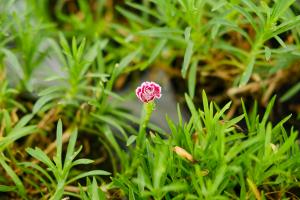Can I Grow Tomato as a House Plant?
Tomatoes are undoubtedly the favorite and versatile vegetable used in almost every dish. Their juicy and tangy taste can enhance the flavor of any cuisine. However, not everyone has a garden or outdoor space to grow tomatoes. So, the question is, can you grow tomato as a house plant? The answer is yes!
How to Grow Tomato as a House Plant?
Firstly, you need to choose the right tomato variety that can grow well in pots. Dwarf varieties like cherry tomatoes or patio tomatoes are ideal for indoor gardening. After that, select a pot with ample drainage holes and a soil mix rich in organic matter. You can also add perlite, vermiculite, or peat moss to the soil to enhance the drainage and aeration of the substrate.
Where to Place Your Tomato Plant?
Tomatoes need a significant amount of sunlight to grow and produce fruits. So, place your plant near a south-facing window or under a grow light that can provide 6-8 hours of full sun exposure. The ideal temperature for tomatoes is between 65-85 degrees Fahrenheit, so make sure to keep them in a warm and humid environment.
Watering and Fertilizing Your Tomato Plant
Tomatoes need consistent watering, and a lack of moisture can lead to blossom end rot or wilting. Water your plants every two to three days or when the top layer of soil feels dry to touch. Fertilize your plant every four to six weeks with a balanced fertilizer that contains nitrogen, phosphorus, and potassium. You can also use organic fertilizers like fish emulsion, compost tea, or worm castings to provide essential nutrients to the soil.
Pruning Your Tomato Plant
Pruning is crucial for tomato plants, especially when you grow them as a house plant. It helps the plant to direct its energy towards fruit production and prevents overcrowding. Remove the suckers or small stems that grow between the main stem and the branches. You can also remove the leaves on the lower side of the plant to improve air circulation and light penetration.
Handling Pests and Diseases
Tomato plants can attract several pests and diseases, such as aphids, whiteflies, spider mites, or blight. You can use organic insecticides like neem oil or insecticidal soap to control the pests. For diseases, keep your plant clean and dry, and avoid overhead watering. You can also use a copper fungicide or remove the infected leaves or fruits to stop the spread.
Conclusion
In conclusion, growing tomatoes as a house plant is not only possible, but it is also a rewarding experience. You can enjoy fresh and juicy tomatoes right from your kitchen, and it can also add aesthetic value to your household. Just make sure to choose the right variety, provide adequate sunlight and water, fertilize and prune your plant, and prevent pests and diseases. Happy gardening!

 how many times do yo...
how many times do yo... how many planted tre...
how many planted tre... how many pine trees ...
how many pine trees ... how many pecan trees...
how many pecan trees... how many plants comp...
how many plants comp... how many plants can ...
how many plants can ... how many plants and ...
how many plants and ... how many pepper plan...
how many pepper plan...

































